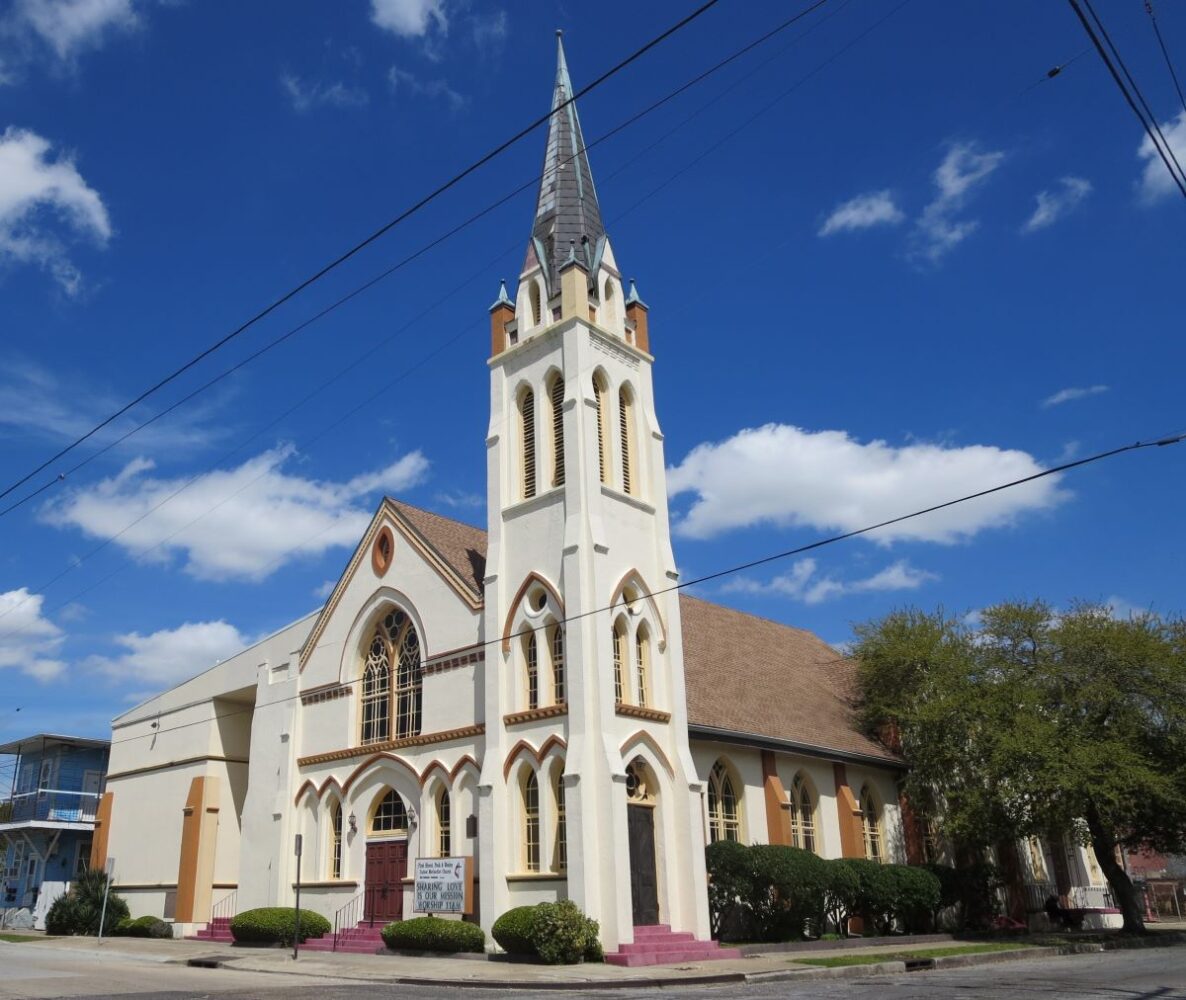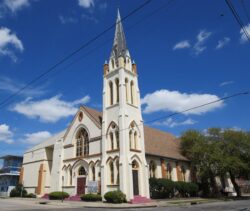Wesley Chapel
One of the first Black Protestant churches in Louisiana, Wesley Chapel played pivotal roles in social and political movements, from teaching freed Black women to read after the Civil War to engaging in the civil rights movement.

Erin Greenwald
After Hurricane Katrina, New Orleans’s Wesley Methodist Church merged with two other historic Black churches to become First Street Peck Wesley United Methodist Church.
Wesley Methodist Church was one of the first Black Protestant churches in Louisiana. Enslaved people founded the church, also known as Wesley Chapel and Mother Wesley, in New Orleans before the Civil War. After the war, Wesley and its members were key to social and political activist movements, including fights against Jim Crow legislation during the late nineteenth century and for civil rights during the mid-twentieth century. Due to the city’s population decline after Hurricane Katrina, Wesley merged with two other historically Black churches to form First Street Peck Wesley United Methodist Church in 2007.
Wesley Chapel started from a racially integrated Methodist congregation that met on Gravier Street in 1838. After six years, that church outgrew its premises, and the white and Black members formed their own churches. The Black congregation remained under the authority and surveillance of white preachers and trustees, even though it had its own Black preachers and leaders. Many were enslaved, including Anthony Ross, W. Scott Chinn, and Henry Green. Many were also brought to New Orleans via the domestic slave trade. Chinn remembered that a white bishop ordained him “without laying of hands” to minister to Black congregants. White pastors and police continued to attended Wesley to monitor what the Black preachers taught.
White Methodists incorporated Wesley in 1844 and bought land from a free Black congregant named Charles Doughty. The congregation erected Wesley’s first building in 1844 on Doughty’s land on Liberty Street, now Magazine, between Poydras and Gravier Streets. The building held 1,200 people, and a sixty-foot steeple adorned its roof.
Because the Methodist Episcopal Church split over slavery in 1844, Doughty and other free Black members of Wesley left to start St. James African Methodist Episcopal Church in New Orleans.
After the Civil War, four white ministers and twelve Black preachers met at Wesley on Christmas Day 1865 to found the Mississippi Mission Conference. The conference organized a regional superstructure for many Black Methodist churches in the lower Mississippi River Valley. In 1869, the Louisiana churches in the Mississippi Mission Conference formed the Louisiana Conference of the Methodist Episcopal Church (North).
During the late nineteenth century, multiple important Black institutions sprang from Wesley. The Women’s Home Missionary Society started at Wesley in 1879 to teach freed women how to read and write. The Methodist newspaper Southwestern Christian Advocate had its first offices in Wesley when it was founded in 1873. Wesley congregants also created the Wesley Chapel Congregation Society, a benevolent society.
The church recorded when notable people visited them, and the list included: P. B. S. Pinchback, C. C. Antoine, Ulysses S. Grant, Henry Clay Warmoth, George Washington Cable, Oscar James Dunn, Lafcadio Hearn, William McKinley, Helen Keller, Edna Thomas, Dorothy Dix, Isador Newman, James H. Dillard, and Marcus Garvey, among many others.
In 1951, Wesley was forced to move church buildings because the city of New Orleans developed a new civic center and railroad terminal on its property. The church united with Mount Zion United Methodist Church on Jackson Avenue, and eventually purchased the building when Mount Zion moved. That building is now a private residence. After Hurricane Katrina, the United Methodist Church merged Wesley with two other historic Black churches, creating First Street Peck Wesley United Methodist Church.
